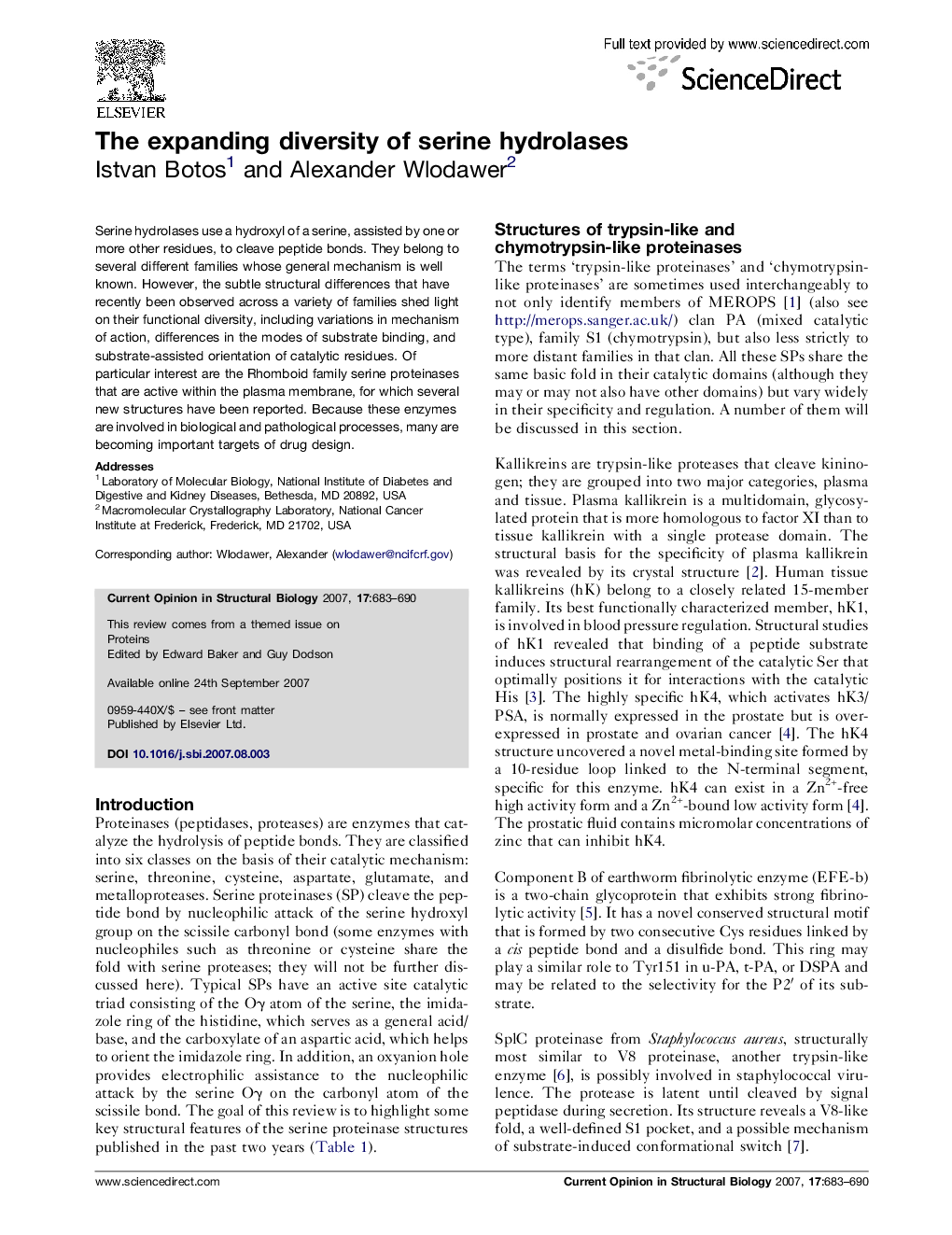| Article ID | Journal | Published Year | Pages | File Type |
|---|---|---|---|---|
| 1979645 | Current Opinion in Structural Biology | 2007 | 8 Pages |
Serine hydrolases use a hydroxyl of a serine, assisted by one or more other residues, to cleave peptide bonds. They belong to several different families whose general mechanism is well known. However, the subtle structural differences that have recently been observed across a variety of families shed light on their functional diversity, including variations in mechanism of action, differences in the modes of substrate binding, and substrate-assisted orientation of catalytic residues. Of particular interest are the Rhomboid family serine proteinases that are active within the plasma membrane, for which several new structures have been reported. Because these enzymes are involved in biological and pathological processes, many are becoming important targets of drug design.
